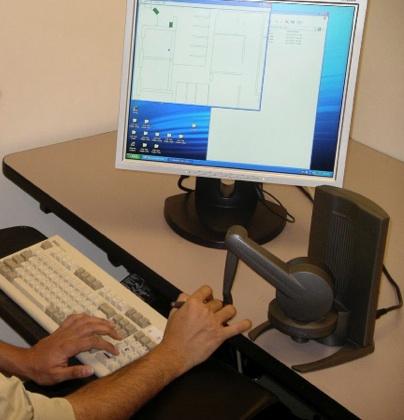Dr. Orli Lahav from the School of Education and the Porter School for Environmental Studies at Tel Aviv University has developed, in collaboration with researchers from MIT, a software system that will allow the blind to tour a virtual environment that simulates the real environment before they reach the real environment

Blind and visually impaired people rely on the help of others to get information that helps them navigate their environment, especially if they are coming to it for the first time.
Dr. Orli Lahav from the School of Education and the Porter School for Environmental Studies at Tel Aviv University has developed, in collaboration with researchers from MIT, a software system that will allow the blind to tour a virtual environment that simulates the real environment before they reach the real environment, and to sense using a joystick and tactile tools three-dimensional which is an interface with the user through the sense of touch.
People can feel the tension under their fingertips as a physical sensation through a joystick as they navigate a virtual environment that they cannot see but only feel. The joystick becomes difficult when the user encounters a virtual wall or obstacle. The system can be programmed to emit sounds such as the activation of a cappuccino machine in a virtual cafe, or phones ringing when the wanderer passes by a reception desk.
The XNUMXD tour system is based on maps of real world environments. The blind can sense streets, sidewalks and highways with the joystick as they move the cursor like a walking stick on a computer screen they cannot see. Before they go out alone into the real environment, the new solution provides them with control, security and the ability to explore new streets, and make unknown spaces familiar and build a mental map in their head.
In an interview with the Hidan site, Dr. Lahav explains: "Just as we look at a map before we wander in a real environment and find spatial information about that place (for example, during planning a trip abroad, AB), so the blind will also be able to receive information in advance, Determine what path they want to take, and get along in the environment using a guide stick or a guide dog that they use in their day-to-day life. For the purpose of the research, we mapped parts of the MIT campus and the Newton Center rehabilitation center for the blind in Massachusetts, and in Israel we mapped parts inside and outside buildings at Tel Aviv University. "
Is there an automatic system that would make it possible, for example, to prepare a virtual world for the blind of, say, Rabin Square in Tel Aviv, based on a satellite photograph?
Dr. Lahav: "In order to visit Rabin Square, they will have to build the environment using an intermediate software between the GIS software and our software and invest several hours in manual work." According to her, this is not yet a product that will soon be released to the market, but an experimental prototype, and it will take a few more years before such a system can be implemented by the visually impaired.

2 תגובות
Completely unnecessary development.
It is cheaper and more effective to train the blind in the real field rather than in a virtual world.
Another development that has no meaning except maybe as a gimmick for computer games, but not for the real world.
Hanan Sabat
http://WWW.EURA.ORG.IL
http://cafe.themarker.com/view.php?t=580514
Something for everyday life